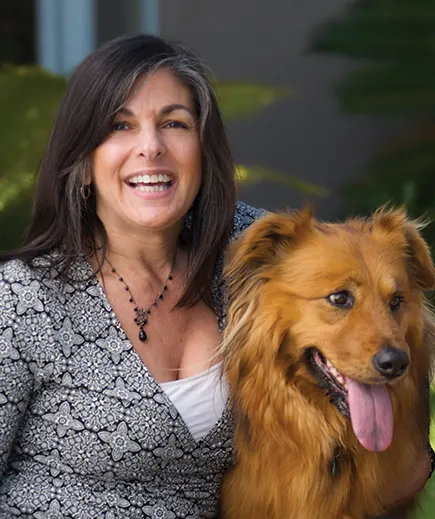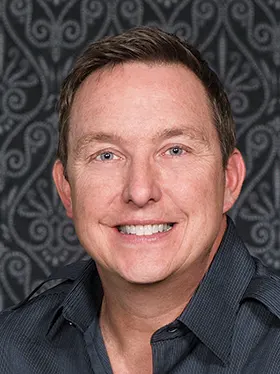General Practitioners vs Specialists: Competition & Collaboration

Competition is a driving force in American business. Veterinary practices, which need to remain profitable while striving to provide the best care possible, are no exception. As veterinary specialization increases, however, collaboration—between general practitioners and specialists, and sometimes between veterinarians with different specialties—may be even more important.
The AVMA currently recognizes 22 organizations comprising 40 specialties.1 In the 11 years ending in December 2014, active veterinary specialists in the United States grew steadily from 7,547 to 11,761, according to the AVMA—an increase of nearly 56%.2,3 However, the Veterinary Internship and Residency Match Program (VIRMP) matched only 30.78% of applicants for a residency this year.4
Given these statistics, ensuring a beneficial balance of competition and cooperation is actively debated within the profession. Two veterinarians knowledgeable about specialization trends shared their views with Veterinary Team Brief.
Related Article: Real Marketing Strategies for Your Practice
Competition & Cooperation
“In the United States, competition is what we’re all about. Competition makes people better,” said Oded Marcovici, DVM. As VCA’s recruiting and professional relations director, he is in charge of hiring specialists for the company’s veterinary practices. “Specialists provide services a general practitioner can’t provide. If they’re taking business, it’s because they can provide services the general practitioner can’t.”
“Finding common ground is always a challenge,” said James DeLano, DVM, co-founder of the Bishop Ranch Veterinary Center & Urgent Care in San Ramon, California, and a volunteer assistant clinical professor of business and communications at University of California, Davis. “The onus is on the specialist to support the private practitioner. … If you are good—take care of the referring vet[erinarians]—they will continue to support you.”
Supply & Demand
Louis Gatto, CPA, founding partner of the veterinary financial consulting firm Gatto McFerson in Santa Monica, California, said, “In the short run, we need all the specialists we can get,” including more ophthalmologists, radiologists, radiation oncologists, cardiologists, and neurologists. “Internal medicine is a little saturated. … Surgeons are doing well.”
However, Gatto predicted future fighting among specialists for cases. For example, he cited potential friction between criticalists and cardiologists, cardiologists and radiologists, surgeons and internists, and internists and criticalists: “Having more of them might create more competition and conflict.”
Robin Brogdon, MA, president of BluePrints Veterinary Marketing Group in Costa Mesa, California, said, “Oncologists, neurologists, and cardiologists are typically in short supply in most places. … While they may not be board-certified specialists, there always seems to be a huge demand for more dedicated emergency veterinarians who work in the ER only and/or specialty/referral practices.”
“In the San Francisco Bay Area, we seem to have a great supply of specialists,” DeLano said. “Like any profession, there are never too many good people,” he said. “We receive résumés from internists and surgeons (essentially cold calling looking for a job) several times a year. … The reality is that some specialties are becoming crowded.”
Marcovici said he has seen a shift among his peers, 1994 veterinary school graduates, from having “laser vision” with a passion for a particular specialty (eg, a strong desire to become a cardiologist) to pursuing specialization “for the sake of being a specialist” among veterinary students today.

“If primary care veterinarians and specialists each support the other’s role in the health and well-being of companion animals over the course of their life, they should both benefit from the role each other plays as a healthcare provider, and the pet should be the beneficiary of exceptional collaborative care when appropriate.”—Robin Brogdon, president, BluePrints Veterinary Marketing Group
“People are going into internships in significantly larger numbers,” Marcovici said, noting a recent trend toward establishing “specialty internships and residencies within the same facility.” An AVMA survey of 2013 veterinary school graduates found 37.6% with internships and 3.4% with residencies.5
Another notable finding was that veterinary graduates who opted for an internship were more likely to receive lower income or face unemployment than veterinarians who chose full-time work following graduation.6
The AVMA's 2014 statistics on veterinarians' first-year employment showed a mean salary of $67,535 for those in private practice, compared with $28,988 for interns. The 2015 report showed an internship was one factor statistically associated with an increased probability of unemployment.7
The 2012 AVMA Biennial Economic Survey found that “private practitioners completing a residency reported median incomes of $148,000, compared with $88,000 for those who completed an internship only and those with a veterinary degree only.”8
“The competition for students to be accepted into a residency program is quite fierce, so in many ways it is still a sellers’ market,” Brogdon said. In some VIRMP categories this year, she said, “There were only one or 2 open slots.” VIRMP’s 2015 statistics show, for example, only 2 residencies each for ambulatory, clinical nutrition, and herd medicine/agricultural practice, and one each for behavior and sports medicine and rehabilitation.4
Declining Salaries
The practice of using a percentage of their production to compensate specialists has been declining. “The days of 30% of production are a distant memory, and this level of compensation was not sustainable, regardless of the economic downturn a few years ago,” Brogdon said. “Things have leveled off to more reasonable and justifiable numbers, and employers are getting better at creating specific criteria by which a specialist can earn more, such as providing continuing education to area veterinarians, contributing to practice newsletters and blogs, and engaging with and nurturing relationships with primary care veterinarians.”
“Overproduction of specialists” may be moving their salaries down, DeLano said. “Also, when you think about it from a purely business perspective, a specialist doesn’t deserve a higher percentage of production and, in fact, that is what kills the business model. Instead, earning the same percentage … but off of higher fees … earns them higher take-home pay. As specialty practice owners realize this—and the supply of candidates grows—pay will decline.
“Twenty-five years ago, when my partner and I opened our practice, we predicted that one day—with consolidation of small practices into larger ones—all large practices would have an internist on their staff,” DeLano said, adding that there is an internist at his practice. “One side effect of that will be a decline in wages, naturally. Internists will have to decide if the extra schooling and debt will pay back. I believe surgeons may end up in the same category.”
Related Article: Your Practice’s Best Offering for Business? Not Drugs or Gadgets!
Specialists’ Impact
“I don’t see an oversupply of specialists as harmful from a global perspective,” DeLano said. “I do think that as the pie is divided into more slices due to growing numbers of specialists, they will be forced to advertise in ways that may disparage general practitioners— knowingly or unknowingly.
“Capitalism has an interesting way of changing people’s outlook on ‘survival’ in the business world,” he said. “As a result, some general practitioners try to do more than they should, and some specialists don’t value their relationship with the referring DVM. Specialists have turned to advertising directly to the general pet-owning population, and I cannot fault them for this.”
Jim Clark*, DVM, MA, a specialty practice owner who teaches at the University of California, Davis School of Veterinary Medicine, said there may be some economic benefits to general practitioners who refer specialty cases.
“If patient survival improves due to the intervention of specialists, then many of these pets will go on to require veterinary services from the general practitioner for the remainder of their life,” he said. “If specialists encourage a higher standard of care … then at least some of these revenues will benefit general practitioners who perform this follow-up care.”
Clark observed that “specialists may elevate the expectations of clients in regard to the level of medical care that is available and appropriate for ill or injured pets, potentially improving compliance with the future recommendations of general practitioners. Additionally, veterinarians who refer cases build trust with their clients by demonstrating a ‘medicine over money’ perspective.”
Over Clark’s 20 years in referral practice, he has encountered numerous clients who were angry with their family veterinarian for never mentioning the option to see a specialist. Many chose to see a different veterinarian because of this perceived breach in trust, he said.
Brogdon heads the Veterinary Specialists Outreach and Awareness Project (VetSOAP), a new initiative with a mission “to achieve optimal healthcare for animals, advance the veterinary profession, and evolve the relationship between primary care veterinarians and specialists.”7 The group partners with specialty colleges, universities, veterinary specialists, specialty practices, primary care veterinarians, and veterinary associations.
VetSOAP is initiating research to discover the true benefits of collaborative care for primary care veterinarians, specialists, and patients, Brogdon said. “Understanding what motivates or hinders referral and collaboration will allow us to demonstrate, through data, the actual effects of a team approach to care.”
A Positive Outlook
Marcovici is optimistic about the changing dynamic between specialists and generalists. “For the sake of pets, it’s positive,” he said, adding that the number of referred cases will depend on general practitioners’ self-confidence and self-awareness because those who are less confident and aware tend to make more referrals.
“If primary care veterinarians and specialists each support the other’s role in the health and well-being of companion animals over the course of their life, they should both benefit from the role each other plays as a healthcare provider, and the pet should be the beneficiary of exceptional collaborative care when appropriate,” Brogdon said.
“Overall, the growing competition among specialists is good for the clients,” Gatto concluded. Trends such as specialists buying small animal practices, specialty practices, emergency practices with surgeons and internists in charge, and generalists and specialists sharing data, he said, make him “very optimistic for the future—patients getting better medicine, clients getting better service, and doctors being able to practice better medicine.”
General Practitioners vs Specialists: Cooperation Is Key
Specialists and general practitioners need to band together to elevate the veterinary profession’s standard of care and educate clients to pay for it, according to Shawn McVey of McVey Management Solutions in Austin, Texas.
As a globe-trotting consultant and a partner in 15 veterinary practices, including 3 specialty and emergency facilities, McVey views interactions between the 2 types of veterinarians from a unique perspective. Conflicts can be resolved only when both sides move from a “general practitioners against specialists” stance to “us against the problem” cooperation, he said.
“Historically, veterinarians have been living in a personal and community box” and they must now move to a collaborative, participative environment, McVey said. He acknowledged that an “inherent conflict of interest” exists because both specialists and general practitioners have cash-flow businesses and experience legal issues, and said, “Ideally, the specialist would become an extension of the family practice” rather than someone the client visits for a one-off procedure.
Ways to accomplish this include “transparent medical records” and making both general and specialty practice teams “more integrated and familiar” with each other, he said, adding that “specialists need to do a much better job of that” to show they do not intend to take cases away from the general practitioner. The 2 types of practitioners also “have to get comfortable with each other about how to handle money,” he said.
“Specialists must reach out and build relationships with general practitioners that make them comfortable,” McVey said, and “general practitioners have to be much more forward [in teaching clients that] owning a pet is a privilege” requiring a significant, long-term financial commitment. “We really need to get together to support pet insurance,” he added.

Conflicts can be resolved only when both sides move from a “general practitioners against specialists” stance to “us against the problem” cooperation.—Shawn McVey, McVey Management Solutions
“The whole profession has to get a lot more comfortable in talking about money” and “embrace market segmentation,” McVey advised. “Of the 26,000 veterinary hospitals in the United States, 10,000 are superfluous,” located in crowded, saturated, urban markets, he said, adding that he believes the abundance of specialists will continue to drive their salaries down, while more hybrid practices will emerge.
“Some form of standardized care,” is required going forward, McVey said, with the solution in the hands of the AVMA and specialty practice governing bodies, who must come together to set the standards.
Editor’s note: Suzanne Smither has 30 years of journalism, editing, management, and research experience. Her writing has been published in numerous newspapers and periodicals, and she has written 6 books about cats.
*Dr. Jim Clark is co-editor in chief of Veterinary Team Brief.